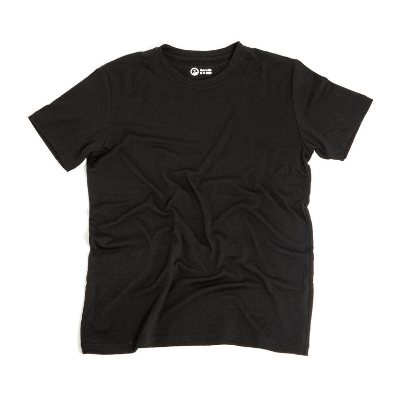We’ve talked a lot about how great a material Merino wool can be; it’s soft, breathable, and odor-resistant. But, in the spirit of objectivity, we now want to provide you with the case against our favorite fabric. So, without further ado, let’s take a look at some of the disadvantages of Merino wool and learn what is being done to overcome them.
Disclaimer: To maintain genuineness and authenticity, Merino Wool Gear DOES NOT sponsor products. Yet as an Amazon Associate, we may earn a commission from qualifying purchases.
Durability Issues
Even though Merino is a fantastic temperature-managing fabric, it tends to be delicate. Much of the ultralight apparel (140 – 180 GSM) is especially weak since it is thin. And, with excessive use and over-washing, holes can sometimes form. Other deformities and fabric failures include excessive pilling, manufacturer defects, and poor construction.
How Do I Avoid Merino Durability Issues?
The first step to avoid any potential durability problems is to understand who you are purchasing your Merino wool from. Several reputable Merino companies offer full refunds on defective items, so you should become familiar with any warranty information before purchasing.
If you’re purchasing a 100% Merino wool product, you are more likely to face issues than buy a blend. Much of the high-performance Merino fabric on the market today is blended or corespun with synthetic fibers like nylon, which improves overall durability. For example, these Icebreaker Anatomica boxers are 83% Merino wool, 12% Nylon, and 5% Elastane.
Finally, the last step is to properly care for your garments; the more you wash it, the higher the hole formation potential. As Merino wool is odor-resistant, you don’t have to wash it as much, so taking better care of your clothing is essential.
It’s Super Expensive
Although Merino wool is an excellent base layer to keep your arms and legs warm, it may also cost you an arm and a leg to purchase it. The average price for a t-shirt is well over $50, and in the words of the rapper Macklemore: “Fifty dollars for a T-shirt, that’s just some ignorant b*tch sh*t.”

$120
Outlier Ultrafine Merino Cut One T-Shirt
Now, these prices seem a bit excessive, but… why exactly is Merino wool so expensive?
Wool Growing Takes Time
It’s not like Merino wool is popping out of the ground like cotton or formulated in a lab like synthetics. It takes time for sheep to grow their coat like it takes time for you to grow your hair. Therefore, the raw material itself is more scarce, which drives the price up.
Taking Care Of Sheep Costs Money
On top of the time it takes for a sheep to grow their coat, it also takes a lot of money to take care of them. They have to have proper nutrition, adequate shelter, water access, and tons of other costs. Remember, sheep are living animals that should be treated ethically, but we’ll get more into that later.
You Need Lots of Merino For A Single Shirt
As Merino fibers are superfine, you need more raw material to create a garment than traditional wool. Manufacturers who don’t have exclusive woolgrowers have to purchase Merino at auction, so depending on the fiber and global availability, the price could go way up.
Tons of Labor Is Involved
From shepherds to shearers, there is a lot of labor costs involved with harvesting Merino wool. Let’s not forget the scouring, dyeing, spinning, designing, sewing, transportation, and tons of other processes that make Merino more expensive.
How Do I Avoid Overspending On Merino Wool?
While much of this Merino wool may seem overpriced, we believe the benefits it provides are much worth the cost. Still, suppose you are a frugal shopper. In that case, there are plenty of companies that offer high-quality Merino at an affordable price. In fact, here are two Merino t-shirts that all retail for under $55 (as of December 2020).
If you want to purchase from some of the higher brand companies, make sure to sign-up for their email list or follow them on Instagram. They often put out exclusive discount codes, sometimes up to 50% off (mostly on Black Friday).
Not Always As Soft as Advertised
The first time we ever tried Merino wool, it felt like our skin is wrapped in a cloud. The fibers are super fine, thus providing a lovely next-to-skin fabric. But, this is not always the case for everyone.
Some users have reported that Merino clothing doesn’t compare to cotton in the softness department. Obviously, it’s no cashmere, but we honestly wouldn’t even put it in the same weight class as cotton. Still, the people have spoken.
Note: We have never experienced any of our Merino wool products being itchy, but for some reason, this is a constant knock on Merino. People with ultra-sensitive skin should not be worried about itchiness but rather inform themselves on the Merino wool quality from the company they are purchasing from.
How Do I Avoid Merino Comfort Issues?
Before making any Merino purchase, check the fiber thickness of the Merino. Anything 18.5-microns or below should feel plenty soft on your skin. If the manufacturer does not advertise their micron thickness, it may be a bit of a red flag.
Also, just like with a lot of these disadvantages, the softness decreases the more you wash it. It’s essential to follow the proper care instructions provided by the manufacturer. Remember, Merino wool is not like other clothing; you can always skip a few laundry cycles.
Note: If you don’t want to treat Merino wool like other fabrics. Harsh chemicals are not the best for overall longevity. So, use basic detergents and no fabric softener when washing.
Merino Wool Absorbs Water But Doesn’t Always Release It
The breathability of Merino wool is exceptional. It can absorb nearly 30% of its weight in water due to the structure of the fibers. This helps with sweat-wicking and temperature regulation, but the issue is getting that water out of the fabric.
Merino wool is not the quick-dry material that many companies claim it to be. In fact, the gear testers over at BestHiking.net did an experiment to determine how fast Merino wool garments dry as compared to polyester. Here are the results:
| Garment | Material | Dry Time |
| Woolly Ultralight Crew Neck | 100% Merino | 48 minutes |
| Under Armour T-Shirt | 100% Polyester | 34 minutes |
| Icebreaker Tech T-Lite | 87% Merino / 13% Nylon | 34 minutes |
| Klattermusen Eir | 70% Merino / 30% Silk | 50 minutes |
As you can see, the Under Armour polyester t-shirt and the Icebreaker Tech T-Lite Merino/Nylon blend dried the fastest. The Woolly Ultralight Crew Neck and Klattermusen Eir shirts took about fifteen minutes longer to dry out.
How To Solve Merino Wool Drying Issues?
The data from the experiment may appear conclusive at first. Still, it only holds true if you are air-drying your Merino garments. Personally, we like to towel dry our garments so they maintain their shape. Even so, does an extra fifteen minutes of drying time outweigh all the other benefits of Merino? We don’t think so.
It’s A Bit Plain
If you’re looking to rock the next fashion style with Merino wool clothing, you may be deeply disappointed. Most of the options out there are plain fabrics, typically earth tones, and lack graphics or designs. It’s a lot more functional and a lot less fashionable (depending on who you ask).
Typically, designers have difficulty crafting “wild” attire with Merino due to its other properties. Basically, it’s a lot less versatile and moldable than other fabrics on the market.
How To Get Stylish Merino Wool Clothing?
Luckily, many large companies like Smartwool and Icebreaker have been using new technology to bring a pop of color into the Merino world. Smartwool offers several different color and pattern options for their performance lines, including the Colorblock legging collection that we love. Icebreaker even has a city label that is filled with fashionable and elegant streetwear crafted from Merino wool. Check out these great designs from both companies below!
Misunderstood Ethics & Sustainability
While most of the current practices throughout the Merino wool harvesting and manufacturing process are ethical, there are some highly-debated issues. We don’t view these as disadvantages as much, but topics to understand if you will purchase this type of apparel.
There are the practices of mulesing, genetic modification of sheep, worker’s rights, and more. If you want to learn more about Merino wool ethics, you can read our complete analysis here.
Final Note About Merino Wool Disadvantages
Now, you understand both the advantages and disadvantages of Merino wool. As an informed buyer, you can make a decision based on your beliefs. In our opinion, the positives vastly outweigh the negatives. But hey, we run an entire site dedicated to this stuff.
Follow us on Instagram @merinowoolgear or keep reading for more deals, reviews, and information on our favorite clothing fabric: Merino wool.





